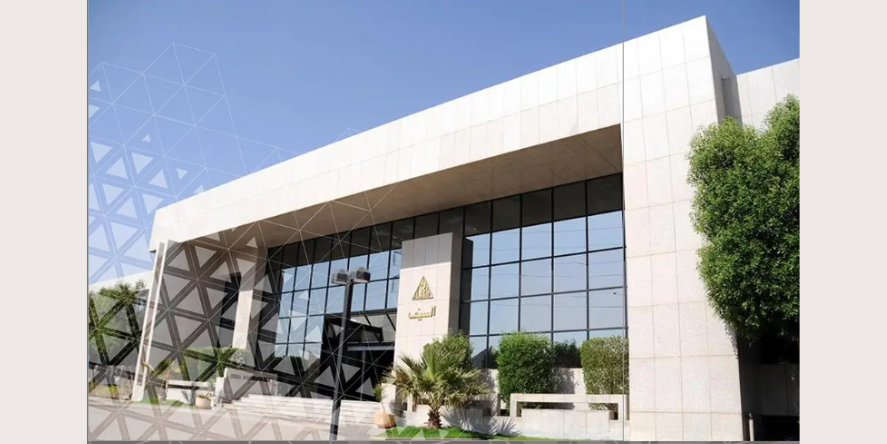Imagine having a seamless, efficient system managing your holding company. Tech solutions can offer this and much more, including superior monitoring of subsidiaries, streamlined resource allocation, and improved risk transparency. By leveraging technology, you’re not only automating mundane tasks but also carving out more time for strategic roles. It’s an intriguing concept, isn’t it? Let’s explore further how implementing tech solutions could revolutionize your holding company management.
Understanding Holding Company Management
To effectively navigate the complexities of holding company management, you must first gain a thorough understanding of its intricacies and operational dynamics. This understanding will allow you to make informed decisions, reduce business risks, and maximize profits.
Holding companies, by definition, own assets of other companies but don’t participate in their daily operations or business activities. The primary function of holding companies is to control and manage their subsidiaries, which involves a unique set of challenges. You’ve to monitor the performance of individual subsidiaries while ensuring that the company as a whole meets its financial targets. It’s a delicate balancing act, requiring strategic planning, financial acumen, and exceptional management skills.
One tricky aspect you’ll encounter in holding company management is the allocation of resources. You’re not just deciding for one company but for a group of companies, each with unique needs and goals. It’s essential to allocate resources equitably while ensuring that the overall company’s objectives are met.
Understanding the operations and structure of Saudi Arabian holding companies and the legal and tax implications is another critical aspect. Different jurisdictions have varying rules, and you must be well-versed in these to avoid legal problems and optimize tax benefits.
The Role of Technology in Business
Invariably, technology plays a crucial role in streamlining holding company management, enhancing efficiency, and driving growth. You see, it’s not just about throwing in some fancy gadgets and calling it a day. No, it’s about strategically leveraging technology to address business needs and solve problems.
As you’re aware, holding companies deal with a unique set of challenges from managing diverse business interests, ensuring regulatory compliance, to coordinating communication across subsidiaries. In all these areas, technology can be a game changer. For instance, advanced data analytics can give you deep insights into performance metrics, helping you make informed decisions. Similarly, automation tools can take over routine tasks, freeing up your workforce for more strategic roles.
Moreover, technology can also enhance transparency, aiding in risk management and compliance. Digital platforms can centralize data and processes, offering a clear view of operations and making it easier to spot anomalies.
In a nutshell, technology isn’t an optional extra anymore; it’s an essential part of your business strategy. Embrace it, and you’ll see how it can transform your company management, making it more efficient, effective, and future-ready.
Streamlining Operations With Tech Solutions
Harnessing the appropriate tech solutions can greatly streamline your company’s operations, making day-to-day tasks more efficient and cost-effective. Think about the repetitive, manual tasks that consume your team’s time. Implementing the right technology can automate these processes, freeing up your team to focus on strategic tasks that require human intuition and creativity.
Consider the following three tech solutions as a starting point:
- Robotic Process Automation (RPA): RPA technology can mimic human actions to automate repetitive tasks. For example, it can automate data entry, saving your team countless hours of manual work.
- Enterprise Resource Planning (ERP) Systems: ERP systems can streamline various business processes, including finance, human resources, and supply chain management. By integrating these functions into one system, you can enhance efficiency and transparency across your company.
- Customer Relationship Management (CRM) Systems: CRM systems can automate and streamline your sales and customer service processes. They provide a centralized platform where all customer interactions can be tracked and managed, improving customer satisfaction and retention.
Enhancing Communication Through Technology
While streamlining operations is a key benefit of tech solutions, it’s also worth noting their ability to greatly enhance communication within your holding company. Advanced tech tools like project management software, cloud-based systems, and integrated communication platforms foster a more unified, efficient communication process.
These tools allow for instant messaging, video conferencing, and file sharing in real time, thereby reducing miscommunications and increasing collaboration. As a result, your team members, regardless of their geographical location, can effectively communicate and work towards common goals.
Moreover, tech solutions also provide a platform for maintaining transparency. With features like task tracking, project updates, and performance metrics, everyone in the company can stay updated, ensuring alignment of objectives and strategies.
Additionally, tech solutions are scalable. As your holding company grows, so does the complexity of communication. However, a robust tech infrastructure can handle this increased demand, eliminating potential bottlenecks.
In essence, technology doesn’t just enhance communication; it redefines it. It’s important, though, to choose the right tech tools that align with your company’s needs and goals. In doing so, you’re not just improving communication but also setting up your holding company for greater success.
Tech-Driven Decision Making Processes
Utilizing technology can greatly enhance your holding company’s decision-making process, providing data-driven insights that improve strategic planning and execution. Advanced analytics and predictive modeling can offer you a clear picture of your business landscape and predict future trends, enabling you to make informed decisions.
- Data Analysis: Tech solutions can help you analyze large amounts of data quickly and accurately. By identifying patterns and trends, you’re better equipped to make strategic decisions that drive growth and profitability.
- Risk Evaluation: Predictive analytics tools can identify potential risks and provide insights on how to mitigate them. By evaluating potential threats, you can implement strategies to manage them proactively, enhancing resilience and reducing unexpected losses.
- Efficiency: Technology can streamline decision-making processes, reduce manual work, and speed up execution. By automating routine tasks, you free up resources and time to focus on more critical strategic matters.
Improving Productivity With Digital Tools
In addition to improving decision-making processes, digital tools can also significantly increase your holding company’s productivity levels. They achieve this by automating routine tasks, thereby freeing up your staff’s time to focus on more strategic roles. With these tools, you’re not only maximizing efficiency but also reducing human error.
Digital tools like project management software can greatly enhance collaboration. They centralize your tasks and documentation, enabling your team to work cohesively from anywhere. These platforms also provide real-time updates, ensuring everyone is on the same page.
Moreover, data analysis tools can help you track your company’s productivity. They offer insights into your operations, identifying areas for improvement. These tools can also predict trends, allowing you to make informed decisions.
Finally, digital security tools can protect your company’s assets and information. This security is critical in maintaining productivity as it prevents disruptions caused by cyber threats.
It’s important to note that the success of these digital tools relies heavily on your implementation strategy. You need to make sure your team is adequately trained and the tools are integrated seamlessly into your existing processes. Your tech solutions should work for you, not against you.
Case Study: Successful Tech Implementations
To truly understand the impact of tech solutions in holding company management, let’s explore a case study that showcases successful implementations. Consider the transformation of a global holding company, which we’ll call Company X.
In 2016, Company X was struggling with inefficient manual processes and communication difficulties among its subsidiaries. They decided to implement a holistic tech solution to streamline their operations.
- Digital Dashboard: By using an integrated digital dashboard, Company X could monitor operations in real-time and make data-driven decisions. This boosted their efficiency significantly.
- Cloud-based Communication: They implemented cloud-based communication tools for better collaboration between their subsidiaries. This reduced misunderstandings and improved overall productivity.
- Automated Reporting: Company X automated its financial reporting process. This saved time and reduced the chances of human error.
After implementing these tech solutions, Company X saw a dramatic improvement in its management efficiency and communication. By leveraging the right technology, they’ve seen a marked increase in their bottom line. This case study demonstrates the transformative power of tech solutions in holding company management. With the right tools, you too can achieve such results.
Financial Management in the Digital Age
As we shift into the digital era, you’ll find that managing finances has become a streamlined process, thanks to innovative technology solutions. In this new age, financial management isn’t just about keeping track of numbers. It’s about leveraging technology to make those numbers work for you.
Let’s consider automated accounting systems, for instance. They can handle routine tasks, such as invoicing and payroll, freeing up your time to focus on strategic financial decisions. You’re not only saving time but also reducing the potential for human error.
Next, think about data analytics tools. These provide you with real-time financial insights, enabling you to make informed decisions swiftly. You’re no longer waiting for end-of-month reports to assess your financial health; you have that information at your fingertips whenever you need it.
Additionally, digital financial management platforms provide seamless integration with other business software. You’re able to pull data from diverse sources, ensuring a thorough view of your financial situation.
Moreover, the advent of cloud-based systems means you can access your financial data securely from anywhere, anytime. You’re not tied to a single device or location, offering you unprecedented flexibility.
In short, technology has revolutionized financial management, making it more efficient, informed, and interconnected.
Technology’s Impact on Strategic Planning
Exploring the world of strategic planning, you’ll notice how technology has become a game-changer, delivering tools that allow for more precise, data-driven decision-making. The impact is profound, shaping the way holding companies envision their future and plot their course of action.
- Scenario Planning: Tech solutions, such as AI and predictive analytics, enable you to create multiple scenarios with varying parameters. You can forecast how changes in the market, economy or competition might affect your business, and plan your strategies accordingly.
- Real-time Data Insights: Technology provides you with real-time data and insights. This means you’re not just relying on past data, but also on current trends and predictions for the future. You’re able to make informed decisions quickly and accurately.
- Enhanced Communication: Technology has also revolutionized communication within the company. Tools like cloud-based platforms allow for seamless sharing of strategic plans, ensuring everyone is on the same page.
Innovations in Business Process Automation
In the ever-evolving landscape of technology, countless innovations in business process automation are revolutionizing the way holding companies operate and streamline their operations. You’re witnessing an era where manual tasks are getting replaced with automated processes, improving efficiency, reducing human error, and freeing up valuable time.
Consider robotic process automation (RPA). It’s a game-changer, automating repetitive, rule-based tasks and processes at an unprecedented scale. Imagine your holding company’s data entry, invoice processing, or customer service tasks being handled swiftly and accurately by software robots.
Then there’s artificial intelligence (AI). AI algorithms can analyze large volumes of data far more quickly than any human team, providing insights and predictions that drive decision-making. Whether you’re forecasting market trends, identifying growth opportunities, or optimizing your portfolio, AI is your valuable ally.
Don’t overlook the value of workflow automation tools. These can simplify complex processes, ensure task accountability, and increase operational transparency across your holding companies.
In essence, tech innovations in business process automation aren’t just about replacing manual labor. It’s about harnessing these tools to transform your operations, create value, and gain a competitive edge. Embrace the change, it’s worth it.
Risk Management and Technology
Shifting to the domain of risk management, it’s evident that technology plays a vital role in identifying, evaluating, and mitigating business risks. As a leader in your holding company, you’re likely aware of how tech tools can greatly enhance your risk management protocols.
- Risk Identification: Tech solutions offer advanced algorithms and machine learning to pinpoint potential risks that might elude human analysis. They can scan vast amounts of data, flagging anomalies and highlighting potential areas of concern.
- Risk Evaluation: Once potential risks are identified, technology aids in appraising their potential impact on your company. Sophisticated software can simulate various scenarios, allowing you to understand the possible outcomes and their implications better.
- Risk Mitigation: Finally, technology offers solutions for managing risks. Automated systems can trigger alerts or initiate predefined responses when certain risk parameters are met, ensuring swift, appropriate action.
In essence, technology acts as your silent partner in risk management, working tirelessly to safeguard your company. However, remember that while tech solutions provide invaluable assistance, they don’t eliminate the need for expert human judgment. Continually updating your tech tools and refining your risk management strategies will ensure your holding company stays ahead in this digital age.
Future Trends in Tech Solutions
What might the future hold for tech solutions in holding company management? Predictions point towards a greater integration of artificial intelligence (AI) and machine learning (ML) in management systems. As a stakeholder, you’ll see these technologies enhancing decision-making processes by providing real-time data analysis, predictive modeling, and trend identification.
Furthermore, blockchain technology could revolutionize the way holding companies manage their subsidiaries. Its potential to provide a decentralized and transparent platform for transactions could lead to increased efficiency and reduced fraud. You might also notice a shift towards automation. Routine tasks such as data entry and report generation could be automated, freeing up valuable time for strategic planning.
Virtual and augmented reality technologies might also find their place in holding company management. They could be used for virtual meetings, training, and even remote inspections of subsidiary operations.
Lastly, expect increased cybersecurity measures. As technology advances, so does the sophistication of cyber threats. Future tech solutions will likely prioritize robust, adaptive security systems to protect sensitive data.
Making the Transition to Tech-Driven Management
As you navigate the shift to tech-driven management, it’s essential to understand that this change involves more than just incorporating new tools into your business operations. It’s about reshaping your business model, strategy, and culture to adapt to today’s digital age.
- Digital Business Model: Your business model must reflect the digital reality. It’s not just about adding a digital component to your existing model but about creating a model where technology is at the core.
- Strategy and Culture: Your strategy should align with your new digital business model. It’s imperative to create a culture that embraces change and encourages innovation. You’re not just adopting technology; you’re fostering a mindset that sees technology as a key enabler of success.
- Training and Skill Development: To successfully evolve, you must invest in employees’ training and skill development. Equip your team with the necessary skills to navigate the digital landscape.
Conclusion
So, you’re still running your holding company with a paper trail and a prayer? Get with the times! With tech solutions, you’ll streamline operations, boost communication, and make informed decisions.
Who knew risk management could be so painless? Don’t be a dinosaur – embrace the future of business.
Remember, technology isn’t just your friend, it’s your saviour in the chaotic world of holding company management.
Blog received on mail










